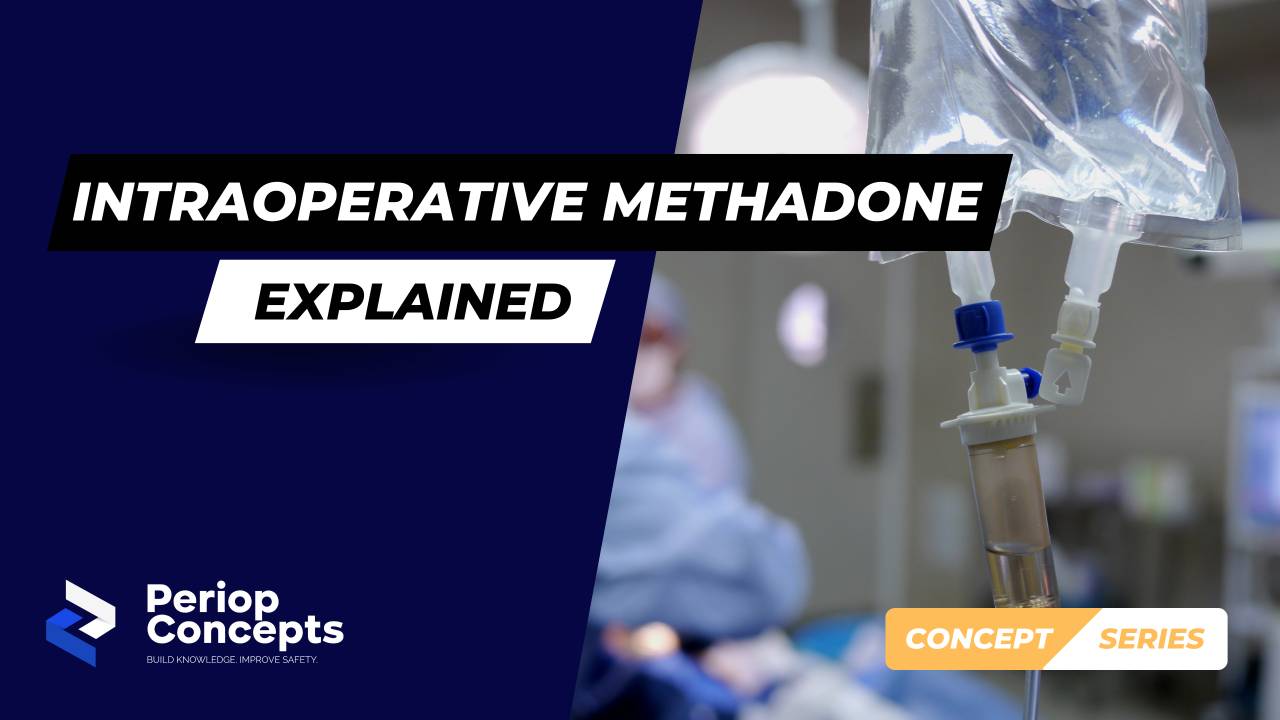Intraoperative Methadone
Mar 15, 2025
💉 The big guns - intraoperative methadone explained
You’ve probably heard about Methadone with immediate thoughts turning to the addiction realm, but did you know that methadone can be used intraoperatively as a powerful analgesic agent?
🧐 Let’s take a closer look at methadone, how it works, and when it might be used in the perioperative setting!
💊 Methadone is a Mu opioid receptor, yes just like oxycodone and fentanyl!
💥 It also works as an NMDA receptor antagonist, just like Ketamine!
🧠 It also inhibits serotonin and noradrenaline reuptake, just like tramadol and tapentadol!
⏳ It has the longest elimination half-life of all opioids ~24-36 hours (some evidence of up to 50 hours!)
🔍 Looking at that, it’s pretty clear why methadone can be a great analgesic option.
💥 It is particularly useful in severe pain, cancer pain, and pain conditions that are not responsive to other opioid agents. Intraoperatively, it is generally used in major open surgeries that have an anticipated prolonged surgical time and expected severe post-operative pain.
🩺 Methadone can be useful in patients that cannot undergo spinal anaesthesia for intrathecal morphine administration (we’ll take a look at this in our next article! 👀)
💉 Methadone dosing is usually 0.15mg/kg of ideal body weight. It can be given as a single bolus or titrated throughout the case, this is usually by anaesthetic preference.
💡 Additional analgesia may still be required for patients that have received intraoperative methadone, and utilizing opioid-sparing adjuncts will help enhance overall analgesia and reduce the occurrence of opioid-related side effects. Additional immediate release opioids can still be given with caution and close monitoring.
⚠️ The downside
As with all medications, there are some cautions and negative side effects that can occur, and methadone is no different! Individual patient response to methadone is extremely variable and difficult to anticipate.
⚖️ Tipping the scales slightly too far in methadone dosing can cause respiratory depression and over-sedation of patients, and with a half-life of up to 36 hours, that is a serious issue!
⏳ The onset time of methadone is relatively quick, meaning the response and/or adverse effects of it will be apparent at the end of the surgical procedure. This differs from other longer-acting opioids such as intrathecal morphine that can have delayed onset times, meaning that when the patient wakes up from surgery, what you see is what you get!
Build Knowledge✅
Improve Safety ✅
References:
Kharasch E. D. (2011). Intraoperative methadone: rediscovery, reappraisal, and reinvigoration?. Anesthesia and analgesia, 112(1), 13–16. https://doi.org/10.1213/ANE.0b013e3181fec9a3
Stay connected with news and updates!
Join our mailing list to receive the latest news and updates from our team.
Don't worry, your information will not be shared.
We hate SPAM. We will never sell your information, for any reason.



